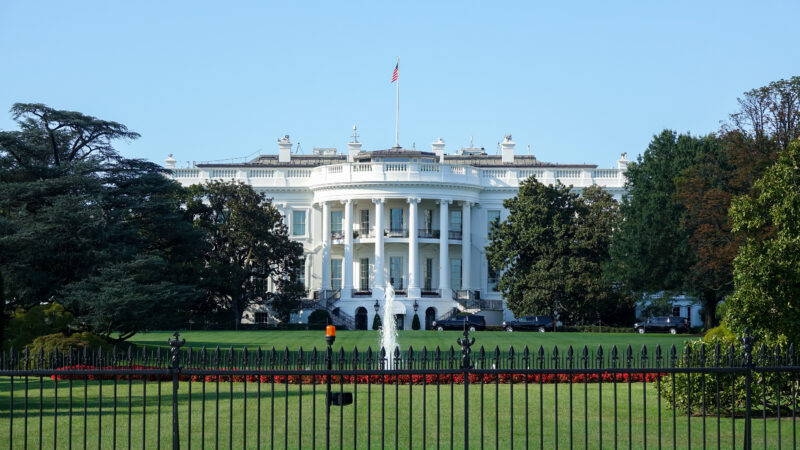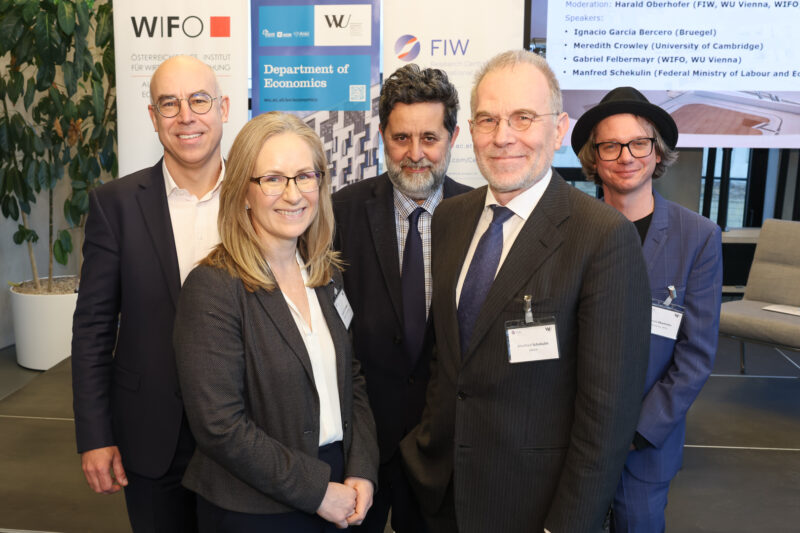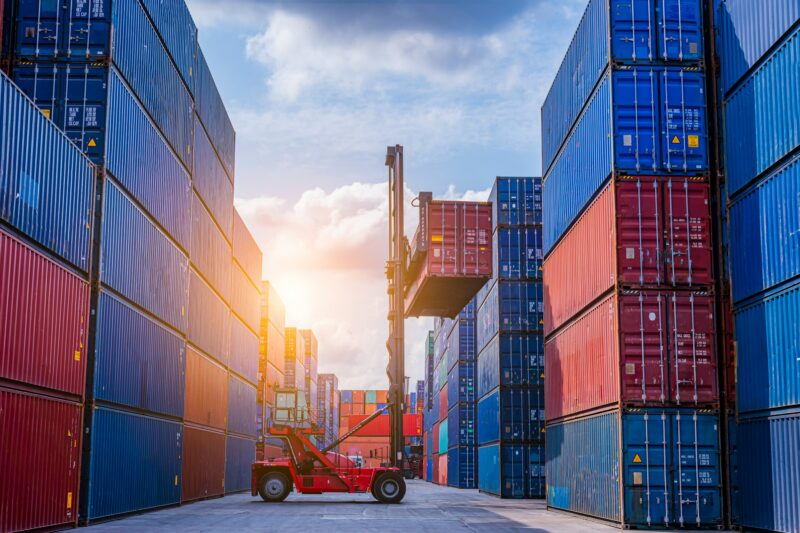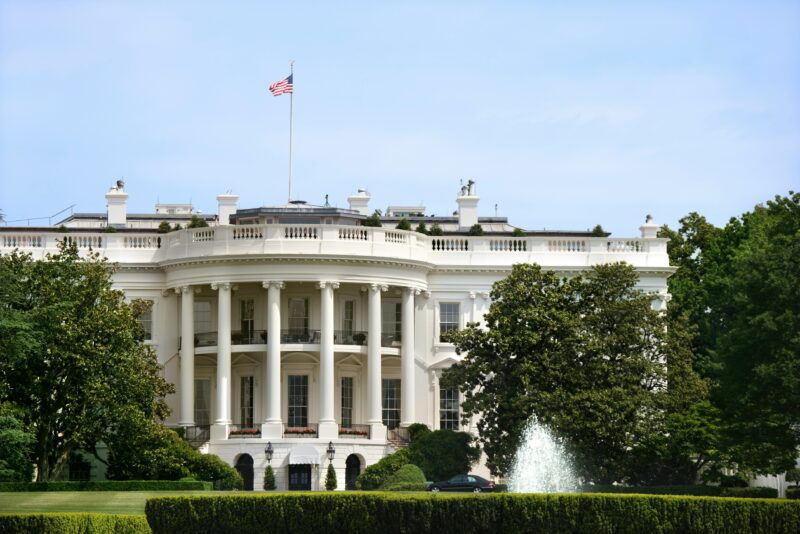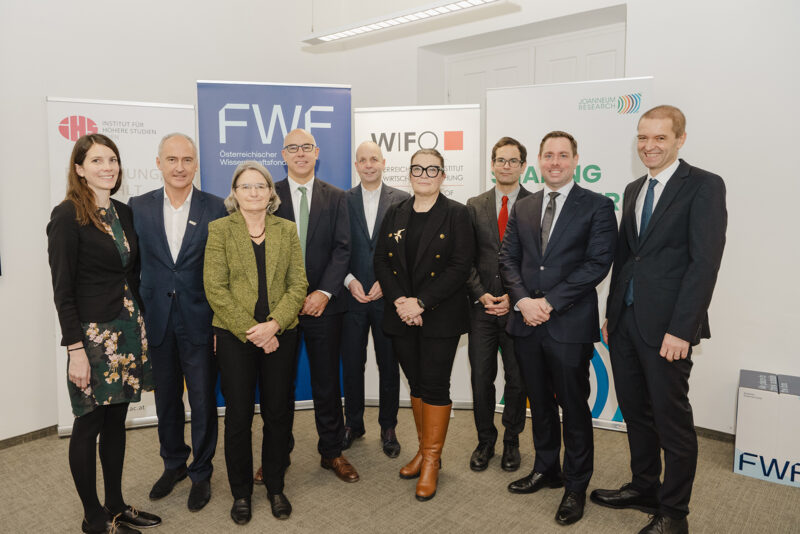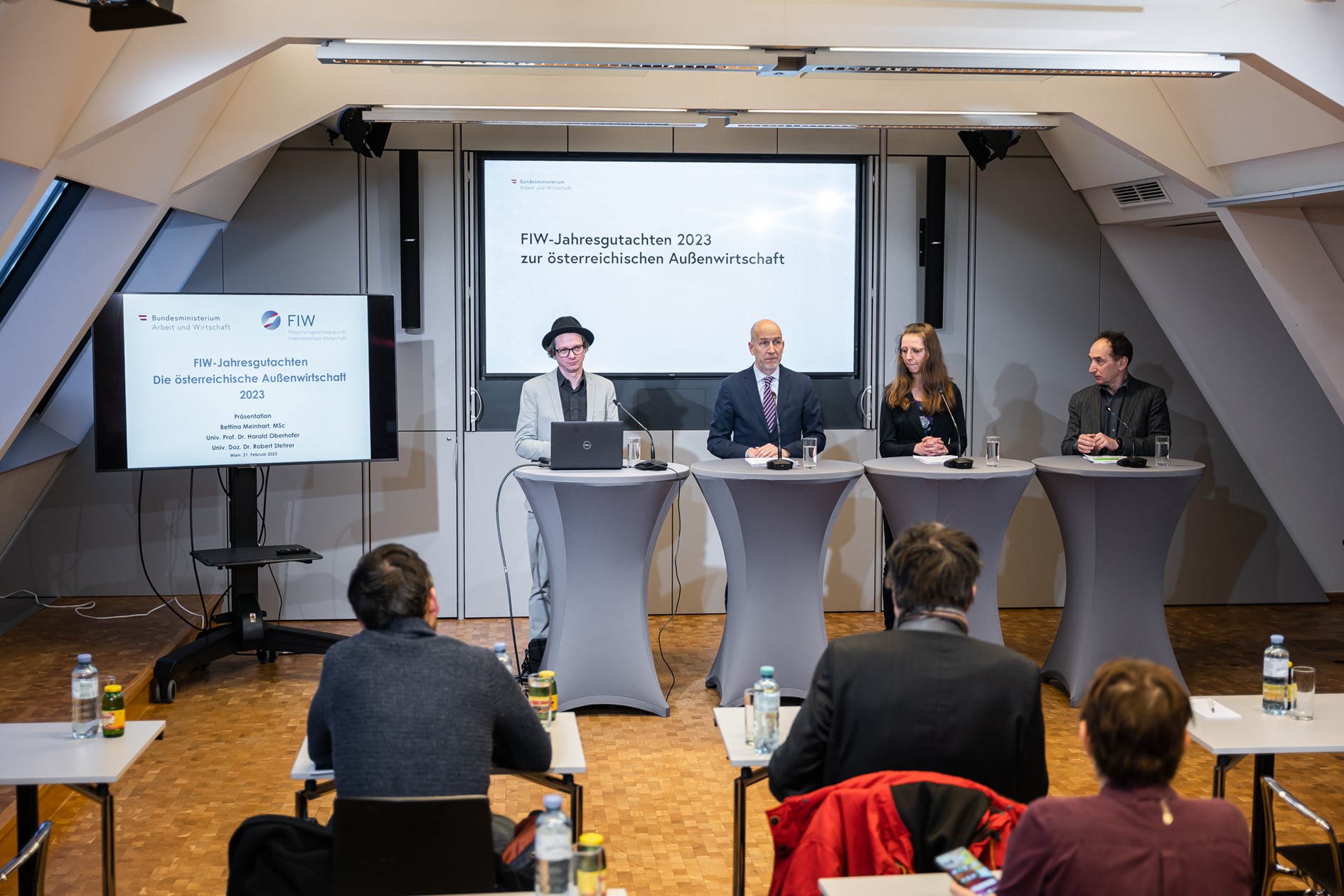
After Years with Strong Growth, Austria's International Trade Stagnates in 2023
The fourth annual report of the FIW on the "Status of the Austrian External Sector" was presented together with Austrian Federal Minister of Labour and Economy Martin Kocher. The annual report focuses on the current international economic conditions for Austria's foreign trade and the development of trade in 2022. In addition, study authors Harald Oberhofer (WIFO, WU Vienna), Robert Stehrer (wiiw) and Bettina Meinhart (WIFO) presented short- and medium-term forecasts for the expected future development of Austria's foreign trade relations.
The year 2022 was dominated by the Russian attack on Ukraine and the subsequent energy price crisis. Households and companies were massively affected by the rise in energy costs. From the second half of the year, the resulting supply shock and high inflation rates left their mark on the global economy. Austria's dependence on Russian natural gas poses particular challenges for domestic households, companies and politicians. In 2022, Austrian foreign trade held up relatively well under these difficult conditions but suffered from the significant deterioration in terms of trade, i.e. a worsening of the relationship between export and import prices. Austrian goods export prices increased by 5.5 percentage points less than import prices. In quantities, Austrian exports have developed more dynamically than imports: according to the forecast, total exports of goods and services rose by 8.8 percent in real terms in 2022, while imports increased by 5.1 percent.
In 2022, the negative terms of trade effect outweighed the quantity effect, so that in 2022 Austria's trade balance deteriorated by 7.6 billion € compared with 2021 and showed a deficit of –20.5 billion €. The more positive development of the services balance, which was driven by a massive increase in travel exports (more trips by foreign tourists to Austria), was able to offset the trade deficit last year. In 2022, the current account surplus amounted to 200 million €.
For 2023, FIW forecasts total exports to grow by 0.3 percent. Imports are expected to rise by 0.9 percent this year. Primarily due to rising import prices – caused by the energy crisis – Austria could post a current account deficit in 2023 for the first time since 2001. According to the forecast, the deficit will amount to –1.8 billion € (0.4 percent of GDP).Based on the study's forecast, the deterioration in the terms of trade will continue this year with a decline of 1 percent. Exports of goods are expected to increase by 0.1 percent, while exports of services are expected to grow by 1.2 percent. Total imports will grow by 0.9 percent. The difference between exports and imports results from higher services import growth of 3.3 percent. The trade balance could deteriorate to –23.3 billion € due to the further negative terms of trade effect. This deficit will no longer be fully compensated by the services balance surplus. In 2023, the Austrian current account will show a negative balance of –1.8 billion € (0.4 percent of GDP). In 2024, the current account is forecasted to return to a small surplus.
The FIW Annual Report 2023 is available here and the data annexes are available here.
Publications
- Robert Stehrer
- Vasily Astrov
- Bernhard Moshammer (The Vienna Institute for International Economic Studies)
- Harald Oberhofer
- Bettina Meinhart
- Yvonne Wolfmayr (WIFO)
Please contact










